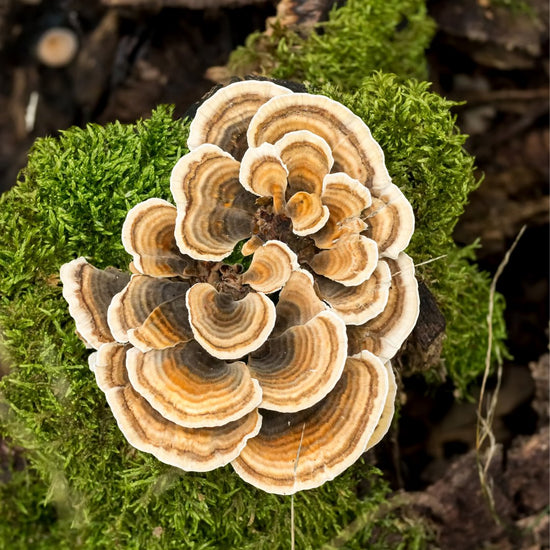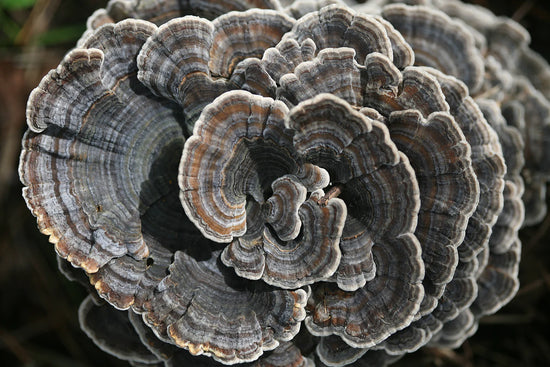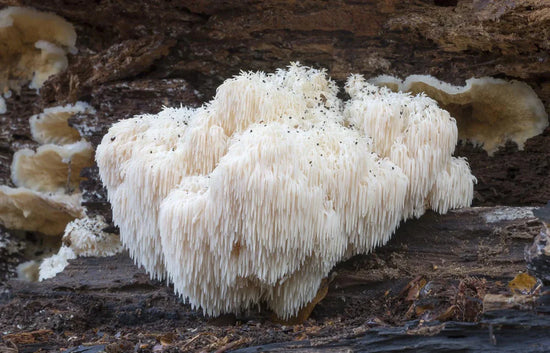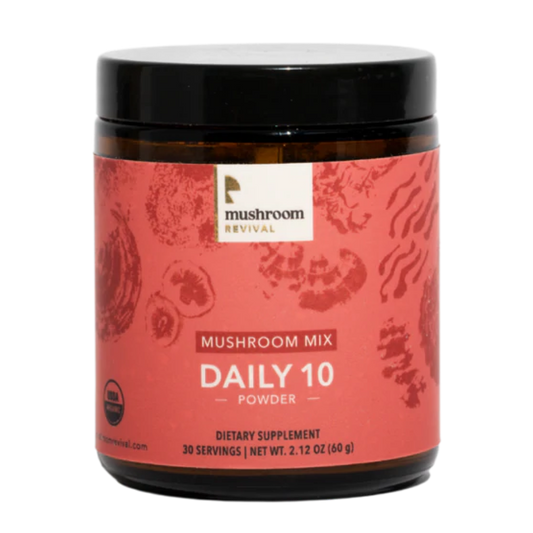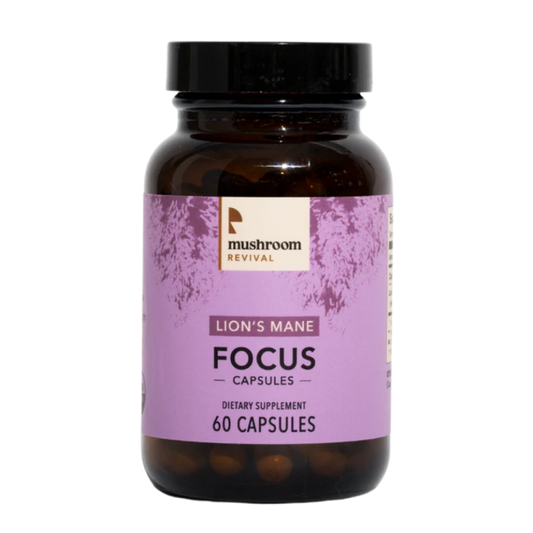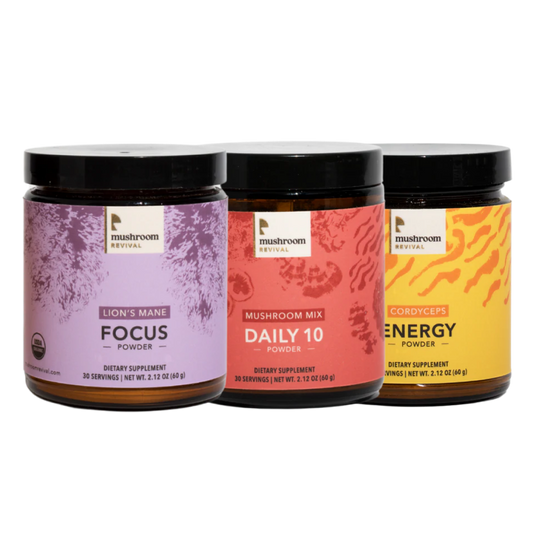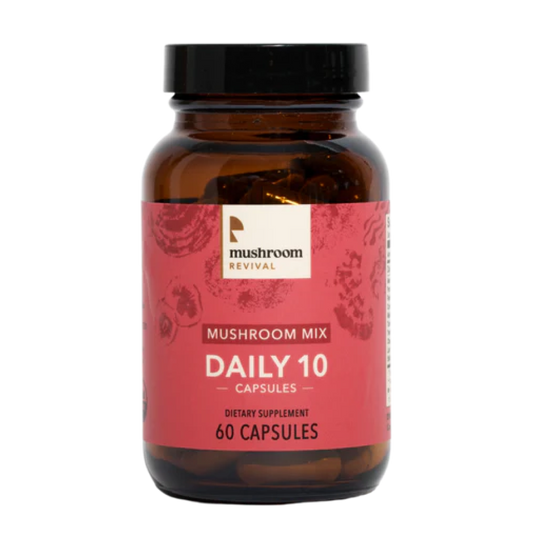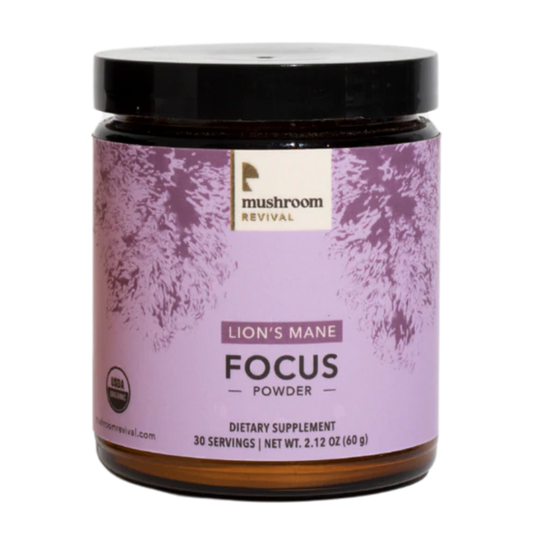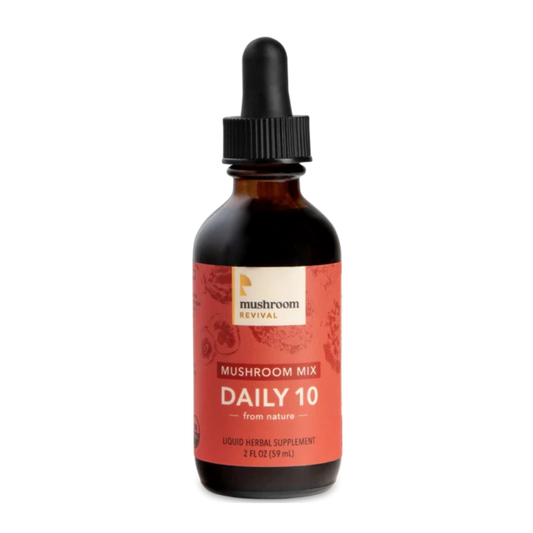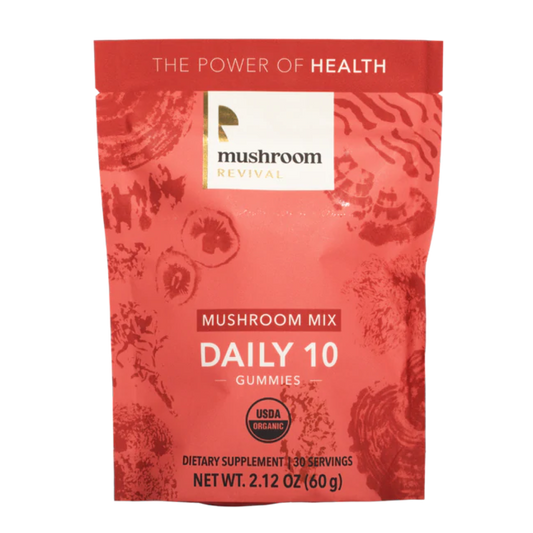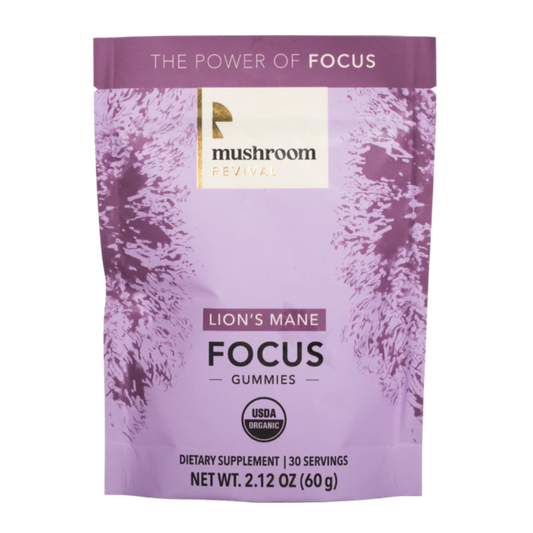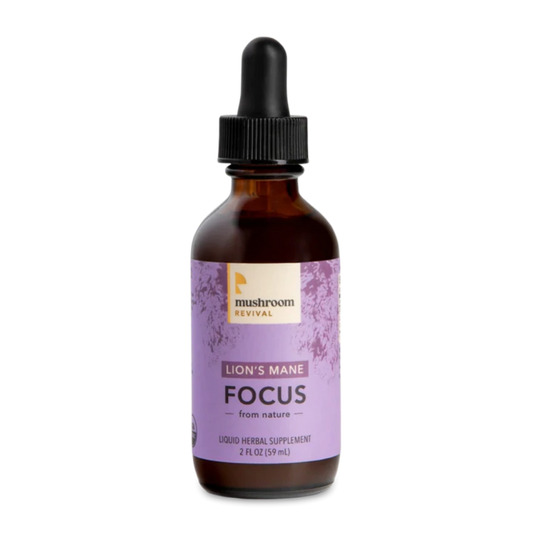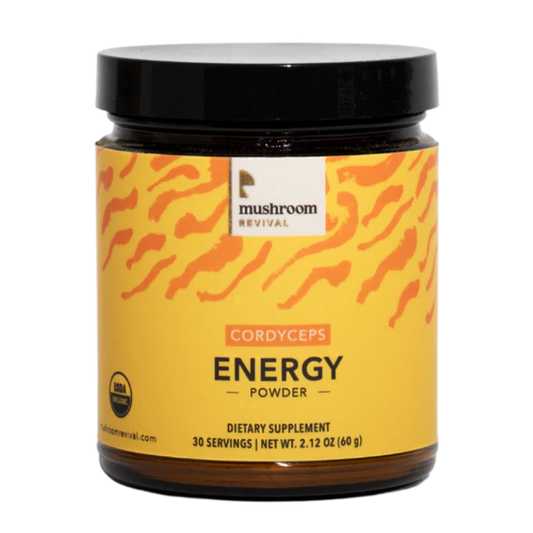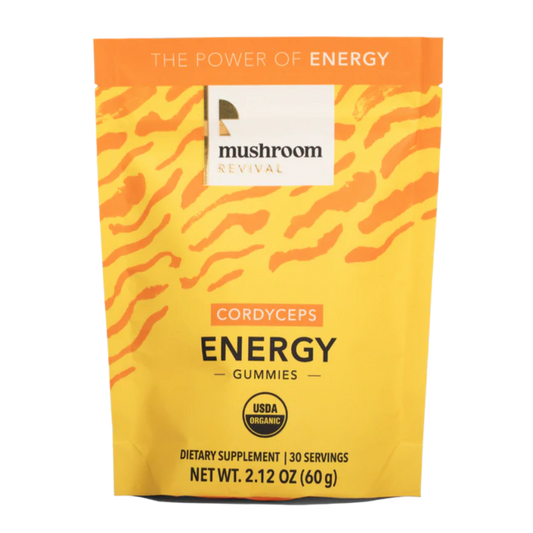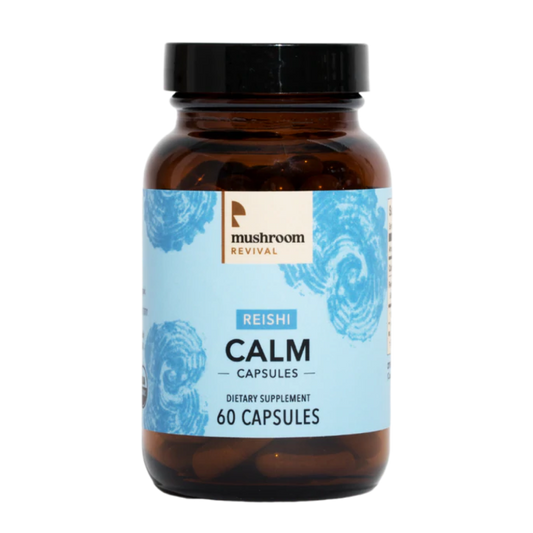Ecology of Psilocybin with Matthew Meyer
Today we are pleased to welcome Mathew Meyer, one of the few researchers to study psilocybin’s role in ecology. We discuss his research paper « Why did the Mushroom Become Magic? » as well as many other publications that shed light on this compelling topic.

Matthew Meyer is a budding research mycologist and currently works as a Microscopy Specialist at the La Jolla Institute for Immunology. In his spare time, he conducts citizen-science fungal research and he serves as the Membership Director for the San Diego Mycological Society. Matthew obtained his Bachelor’s degree at Whitman College in Walla Walla, WA in 2017 and is currently applying to mycology PhD programs around the world. He hopes to study fungal chemical ecology with an emphasis on fungal-invertebrate interactions.
Show Notes:
https://drive.google.com/open?id=1SxetRrvgFjJnUi6pN1K3cUjzY2j18Eun
Transcript:
Alex: Welcome, welcome Mush Fam to another episode of the Mushroom Revival Podcast. This is a podcast dedicated to Bridging the Gap between you, our lovely listeners, and the wacky wonderful world of mushrooms. Mushroom Revival is a functional mushroom company based in Western Massachusetts and our mission is to really create a revival in the way that people view mushrooms as a for people and the planet. We focus on making mushroom supplements and to really give people more energy, better night sleep, a clear mind, build up our immune system. And revitalizing not only inside but outside by planting a tree for every product that we sell and we are trying a whole ecosystem of fungal nerds and people just geeking out about how mushrooms can save the world and how they are the coolest thing on the planet. so, check this out at www.mushroom-revival.com, got a bunch more podcasts, a bunch more blog posts, a whole line of products and so much more. So, thanks for tuning in and geeking out with us about mushrooms. We have an awesome guest today and his name is Matthew.
Lera: Matthew Meyer is a budding research Mycologist and currently works as a microscopy specialist at the Lawal Institute for Immunology. In his spare time, he conducts citizen science fungal research and he serves as the membership director for the San Diego mathematical Society. Matthew obtained his bachelor degree at Whitman College in Walla Walla Washington, in 2017 and is currently applying it to mycology PhD programs around the world. He hopes to study chemical ecology with an emphasis on fungal and vertebrate reactions.
Matthew: Thanks for having me on.
Lera: Yeah can you tell our listeners a little bit more about yourself and your work at University and how you got into this subject.
Matthew: Yes, so I just kind of have always been interested in mushrooms as a kid it was always funny because when I grew up here in San Diego, it’s pretty dry, there aren’t a lot of mushrooms around. So, whenever I saw them, I thought they were really interesting and I sought them out. But I didn’t do anything about them academically, until where I notice there were some other likeminded people who were also interested in mushrooms and I started pursuing it a bit more as an under grad and started a Mycology Club and then from there, I started making some independent classes. once I finally had the ability to design my own senior thesis, I choose Mycology related topics. And now hopefully I am going to go to grade school for Mycology.
Alex: that's awesome and can you talk about your thesis work and you publish a paper right and I saw the poster of it and it looks super interesting and you're telling us a little bit before the show about what you were researching and it that blew our minds. so, it's really cool can you talk a little bit about that work.
Matthew: Absolutely, I started the undergraduate thesis, as just a project for my summer abroad. when I went to Costa Rica and I was looking through the various different fungi in the area, and I noticed there were …...one of the mushrooms in the local area. And it made me think, as anybody ever figured out why these mushrooms are producing silly ident. I had seen plenty of studies of how it was helping all these mental health things and how it affects cognition in humans but I was curious as to what its original ecological purpose was and then I started doing some literature research and I couldn't find anything. So, I decided I was going to go and do it myself.
I went and I found some peek events and then I took them back to our field station, made some extracts, and started testing it on a bunch of various different organisms. From bacteria and other soil microbes and brown shrimp and then eventually I continued that research back in the United States with some nematodes
Alex: And what were the key findings of that research?
Matthew: The findings were really interesting. The bacteria, which I did model gram-negative and gram-positive E. coli and Staphylococcus and neither of them showed any inhibition. The extracts did nothing to them, nor did they do anything for the nematodes. But for the soil cultures, there did seem to show some inhibition of the growth of various different colonies on the agar plates, so that was really interesting. As well as, thou the most impressive of all the biomasses, I do believe is with the brim shrimp.
Now Brine shrimp aren't anything that a cell producing fungi will actually be in the wild. But they are used for a lot of model organisms for a lot of arthropods. Another arthropod the psilocybin fungi do interact with or we suppose that interact with is insects. With the brine shrimp, the extracts killed all of them. Every concentration I used, including the lowest concentration, killed 100% of all the brine shrimp in 3 hours. So that was...for a while I really biomasses truly believe oh my God, this thing clearly defends against insects then. That’s why psilocybin mushroom produces this in the first place. And then there was some ecological evidence to support that as well, and a couple other paper seem to suggest it. But now I’m no longer believing that quite as convincingly anymore.
That’s because I have continued my research after graduation from undergrad and I have been doing work with a psilocybin analog research chemical known as 4 ACO DMT and I have been using that on Crickets. The crickets have shown absolutely no mortality whatsoever with the 4 ACO DMT. And there was another preprint which came out from the lab of Brim Dinger that showed that Russophile flies could lay their eggs inside psilocybin producing mushrooms and the larva would grow up pretty normally without any deformities and that seem to suggest that it’s not hurting them in any sort of way. And then there is an ongoing research with psilocybin producing fungi that would actually imitate a termite egg and that also obviously is not killing the termites, they are been taking care of by the termites. it seems to be showing a bit more complicated picture and now my current hypothesis is that it still evolved to interact with the insects but to mediate the interactions in some ways. Maybe some insects are toxic depending on the circumstances, maybe in conjunction with other compounds and their environment or something like that. And in other insects it might be a mutualistic relationship where there is, let’s say it helps them sets their spores or they get taking care of or in the case of the termites mimicking eggs or the termite mimicking egg fungus. I just think it's a bit more of a complicated picture now.
Alex: it is really interesting to talk about because...have you read the book Food of the Gods by Terence McKenna?
Matthew: No, it’s on my list but I really want to.
Alex: Oh, yeah. It’s a great. You would love it especially coming from this angle where I'm coming from, a different angle is a more popular theory in the magic mushroom space of how early ancestors of humans co-evolve with psilocybin and before, there's a theory that we were hunters and gatherers we were following along behind animals and their dropping dung and when we were hungry we eat mushrooms and some of those mushrooms contains psilocybin This was before we develop language and we're having these crazy experiences through neurogenesis overtime of millions of years our brain evolved and we created language and we’ve evolved with psilocybin. To the point where now we're growing it and its part of our culture. So that is the theory, presented by Terence McKenna but what's really amazing is that you're coming from a different angle, which is really humbling. It's like that is a very human Centric view of the evolution of psilocybin is like magic mushrooms created psilocybin just for humans and no other organism really matters.
Where you're coming from is like mushrooms develop psilocybin way before early humanoids and really the theory is it's because of insects and really modulating their behavior so I just want to get into it because it's really juicy and it just breaks down the human Centric old theory that's been going around for a while. I still really love that story by Terrence but this is just another angle that just humbles the human Centric point of view. Can you just go through the history of psilocybin and serotonin and psilocybin have evolved throughout time?
Matthew: Sure, first of all, I would like to say that I think that potentially there is still some credence to Terrence's story. Not in the sense that psilocybin evolved for us but rather that humans evolved to be more receptive to the effects of psilocybin. I still think that is decently possible, but not that psilocybin evolved for us. As you’ve pointed out, we know that at least the various different families that can produce psilocybin diversified and evolved around almost 400 million years ago, and then it went through another diversification about 50 million years ago that was way before humans. Modern-day humans didn't even show up until about a hundred thousand years ago and so think that it has anything to do with us is as you pointed out, a bit human-centric.
Alex: So, this has obviously been modulating and having an effect on many different other organisms before humans, for millions, hundreds of millions of years?
Matthew: yes definitely. So, I’ll go through a bit of history as you suggested. First of all, psilocybin binds to what is known as serotonin receptors or 5HT receptors. Serotonin is a super-duper ancient molecule. The serotonin binding receptors evolved about 750 million years ago in single cells…. before animals even existed at all. It’s diversified into seven different subtypes, 1-7, 7 5-ht 1 - 7 within animals. All animals contain 5-ht receptors except for sponges every other type of animal which all have nervous systems in the way have serotonin receptors but they do different things in different organisms. For example, Jellyfish, it helps them with rhythmic contractions, in flatworms, it helps them with reproduction, in mollusks like snails and slugs it helps with feeding and learning. Coruscation, its aggression, and jawless fish is locomotion and in mammals, like us, it helps with sleep, appetite, moods, and sensory perception regulation. Which is why it can end up having the same tripping effects where it affects our mood and our sensory perception.
Alex: That's very interesting. I was just reading in the handbook of Behavioral Neurobiology of Serotonin that when the animal kingdom actually began the ability to synthesize tryptophan was lost, and serotonin levels dropped dramatically at that time and animals had to really develop and adopt many special mechanisms to secure tryptophan and notably serotonin from their diets and carefully conserve its Integrity during circulation throughout the body and not cut it goes along with Terence McKenna as you know stoned age theory and what you're talking about. If mushrooms did not evolve for humans, humans evolved to adapt to the benefits of mushrooms and I think one of them could be, since we lost the ability to synthesize tryptophan, I’m not an expert in this but I'm just thinking that maybe going from the quote on quote Adam and Eve story going out of Africa into colder climates where there's less sunlight and were more affected by that light manipulation and have more depression and lower serotonin levels is that where we're working with sulfide and using that as kind of a happy drug and using it for our coevolution. Before happy lamps and before any [inaudible] drugs and keeping them in honey. That’s where the theory in Food of the Gods and Kay trestle the cave painting of The Bee Shaman, that shows a human covered in mushrooms and as a Bee head and as we're leaving we're going north into colder climates where there's less sunlight less psilocybin mushrooms that we're storing these mushrooms and honey it's kind of like a serotonin store. to really use that as a supplement for co-evolution, it’s really interesting that kind of evolution through time. but I think what we haven’t really talked about in this space or it hasn't been publicized is how serotonin and psilocybin affect the whole rest of life and specifically insects and another Animalia.
Matthew: Absolutely, no it’s a fascinating idea and I think that there is some credence to it. That when you consume psilocybin there is an up-regulation of serotonin in general. your body produces enough serotonin alongside it, which is really interesting because it’s already our psilocybin, which then becomes psilocin in the body that actually binds to serotonin receptors. Psilocin actually binds to serotonin receptors and yet at that same tine increases the production of more serotonin which can sometimes lead to what is known as a serotonin syndrome if you have too much serotonin in your body. But it's a very unique and very interesting idea. I have not thought about that in particular so that's cool.
Lera: Can we talk about where these psilocybin producing mushrooms show up, so that …. they are dung loving, and they are found in wood-decaying niches and maybe your thoughts on why they evolve in those particular eco-systems?
Matthew: Sure, yeah. As you’ve said they are found in dung and wood decay. But not exclusively, there is one circumstance where it’s known to be in a liking as well as one that was found very recently inside of a cicada parasite that one in particular is very unique because that's the first and only instance known of psilocybin occurring outside of basidiomycete. It’s in Mathisporah. I don’t remember where mathispora is anymore, mathispora used to be in Zygomycota but it’s been moved since the fungal taxonomy is changing all of the time because of biogenetics, but it's not a basidiomycete. So, that's really interesting. It's showing up in different places. But when it is in these dungs and wood-decaying niches, there is a lot of competition there from other sorts of organisms. Both other fungi as well as insects and other microorganisms. So, there is definitely some sort of advantage to potentially producing something that can deter competitors or directly remove them or to potentially mediate the interactions in some kind of way, have them be beneficial to you rather than be competitors. I think there is some credence to that, additionally, one hypothesis that I have is that it could actually be for a biotics defense. In those sort of decaying environments, oftentimes ammonia build-up, and ammonia is toxic to many fungi and because of that ammonia could potentially have been converted into psilocybin because ammonia has similar compounds, sorry similar molecules in it to psilocybin, so it’s a possibility that they actually use this ammonia, to or psilocybin as a way to detoxify ammonia. And there is an example of that, walnut seeds do a similar thing with serotonin. They use serotonin to detoxify excess ammonia.
Alex: That's super interesting. We are reading in this article called horizontal Gene Custer Transfer increased hallucinogenic mushroom diversity, and they're talking about how some wood and dung decaying fungi share a lot of genes and they're really similar to each other and it was theorized that they're using horizontal Gene transfer to have an evolutionary advantage against insects. to deter insects that act as competition or insects that actually eat the mycelium. So, could you describe what exactly is horizontal Gene transfer and are these...are some species of wood slash decaying fungi are actually stealing genes from other fungi that can produce psilocybin to be able to deter these insects. are they seeing these other fungi that can produce it and saying hey I see your advantage can I steal some of your genes? what exactly is going on?
Matthew: Sure, I don't think we can amplify modifies them in that's sort of way, in terms of actively thinking about it, but they might coincidentally take up the genes necessary to produce psilocybin and then those individuals that have the ability to produce psilocybin, have advantages over the ones that didn't take it up, and then those one proliferates more via natural selection. That’s why we can amplify modifies them in that sort of way. But to go back to the original question, the horizontal gene transfers. There are two basic ways to transfer genes to organisms, and they are horizontal and vertical.
Vertical is the one that we are much more familiar with, which is having children...having offspring. You pass on your genes to a new organism through sexual reproduction or asexual reproduction, either way.
Then horizontal gene transfer is interesting because it's very prevalent in a lot of prokaryotes, like bacteria. Where they can just take up ambient DNA from their environment and incorporate into their Genome as they're still alive. They don't have to create a new life form to take out new genes, they just take on new genetic information while they're still alive and can incorporate it and start using it. While some other fungi have been known this, none mushroom produces fungi. So not psilocybin basidiomycete or ascomycete. This is the very first time this is described where basidiomycete fungi have a horizontally transferred gene. Beyond the fact that it is interesting because it is psilocybin, this is just an interesting finding in the first place. To me it shows that there is clearly some sort of an adaptive advantage to producing psilocybin if...if horizontal gene transfer is very rare in basidiomycete but all of these different fungi all have potentially horizontally transferred.
so that seems to show there are some reasons why it's there. Otherwise, they wouldn't have had it...they wouldn’t be found everywhere it would have been phased out.
Madz: Is there any discussion on whether or not one species developed psilocybin independently?
Matthew: Yeah, there is a was a more recent preprint that I actually came out in 2018 I believe, that was by Brent Dinger lab, and his work showed that there were some independent derivations of the psilocybin gene cluster or rather it was a different gene altogether, but ultimately still ended up producing psilocybin. So, the fact that it’s been convergently producing independently several times, and is also horizontally transferred, it to me, again, it shows that there is something really going on here. It’s still a bit of mystery as to what, but it seems compelling to me.
Lera: Yeah, likewise.
Alex: I am very curious; I have to do a lot more research into this. It just sparked my interest of the correlation between this and entomopathogenic fungi, because it seems like horizontal Gene transfer is really common in Ascomycota and there are so many species of insects and it seems like entomopathogenic fungi are really using the same secreting...these compounds to interact with insects to control them into doing their bidding. Which it seems like psilocybin is kind of doing the same thing of secreting compounds to really control an insect bidding and masospora which grows on the cicada which was very famous just recently if... it's a horrific story about this cordyceps or entomopathogenic fungi attacking cicada and eating their butt off, and it was just found to have psilocybin ...am drawing a blank on names….like an adrenaline producing compound.
Matthew: CATA none.
Alex: Yes, CATA none, exactly.
Matthew: It's an amphetamine.
Alex: Amphetamine, thanks, I ‘m swept on what the name amphetamine is but, totally and it’s controlling the insect to do its bidding and using the psilocybin pathway with it's an epileptogenic action. And so that was really curious and we're just doing research on cordyceps unilateralism which is the infamous mushroom that grows out of a carpenter ant that you see on planet Earth and things like that, and they were describing the compounds that it shoots into this ant, and one of the compounds was ergot, and various Acalculous and ergot leads to a serotonin genic over stimulation of the nervous system. so, I have to do more research into it. But it seems like there's a lot of parallels between what cordyceps are doing and what fungi are doing and what psilocybin mushrooms are doing to control insects, and I'm just curious. Do you think that the horizontal Gene transfer helps the development of the diversity of entomopathogenic to control insect population?
Matthew: It is a very distinct possibility. I believe that there was another paper that came out just earlier this year...oh no not this year 2019...its 2020 now. It actually shows more instances of horizontal gene transfer in higher fungi after the psilocybin gene cluster. It is very possible that we may find that as well in more mahoganies fungi. I believe it was the same one that is in mathispora, as is in a lot of these basidiomycota. Which is weird, because it is very far away. Genetically speaking it's incredibly far away. so, it's possible we will also find more entomopathogenic fungi that also produce psilocybin. and like you pointed out, that’s really interesting that they produce ergot. Ergot...because ergotamine is a lysergamide, so it's basically a precursor to LSD and those share a similar structure to psilocybin, in that they both have serotonin action inside or tryptamine action.
Alex: Right, I just saw a crazy similarity, and it just sparked my interest. right before we're on air, I was flipping through some books trying to
Lera: Soak it up in the last 3 minutes.
Alex: Now I’m geeking out; no, I really want to dive into that area and find out what’s going on with cordyceps.
Matthew: Oh yeah send me some of that stuff, I would really love to hear about it too.
Alex: Totally, yeah.
Lera: Can we get a little deeper into the whole genome of psilocybin? There was one paper that was pretty cool talking about, the beta corbleans present and where they show up in different species and all the different orchestras that you need in order for the fungus to be considered psychoactive.
Matthew: Yeah, absolutely. so that paper just came out, it's very new and what's really interesting about it is that it's showing for the first time that psilocybin producing fungi also actually produce beta-carbolines. Which are also known as, or mono-oxidase inhibitors, AMOIs. And those are used in a lot of psychedelic bruises such as Ayahuasca to increase the potency of other psychedelics tryptamines and psilocybin producing fungi, seem to be able to do it natively. which was not known before at all. But the caveat here is, that it is actually… These beta carbolines or AMOIs are found more often or in much more concentration, in 100-fold, in the mycelium than the fruiting bodies. So that’s really interesting and unique, as you guys point out a lot. Oftentimes a lot of these unique compounds that are interesting, are found in the fruiting bodies, not in the mycelium. But in this case, it does seem to be the opposite, the beta-carbolines are found in much higher concentration in the mycelium. And also found in the sclerotia of P. Mexicana around 7 times the rate of the mushroom.
So, to me, this suggests that if it’s for a defensive purpose or immediate interactions of organisms, there are different organisms that it is interacting with like underground versus in the air, and that potentially this might be likely to inhibit more or inhabit other fungi or bacteria in the soil or Subterranean targets like nematodes or anolibs, like earthworms.
Alex: This paper that he is talking about is called the Simultaneous Production of Psilocybin in a cocktail of Carboline monoamine oxidase Inhibitors in magic mushrooms, an awesome paper highly recommended. I was geeking out about this paper, so thanks for sharing that. It was really awesome and it's really curious I would study...I was in Ecuador about four years ago studying leaf cutter ants and they are notorious for farming fungi and farming mycelium in their nests and they go in trees and they take a little bit of the leaf and they bite them up into this leaf mush. The queen actually steals a piece of the mushroom tissue from a local mushroom and I think they work with like three different species, but mostly one species that I forget the name and they grow mycelium in this leaf mush. And they have antifungal or antimicrobial compounds. Or antimicrobial compounds in their saliva that works in all different types of fungi, except for this specific one. And they actually eat the whiffle tip and this is the beta-carbolines. The study showed that there's a ton of beta-carbolines in the whiffle tip and that's what the insects are eating. And the whiffle for the listener who doesn't know, it's the tip of the root, so to speak.
Lera: it's the edge of the mycelium.
Alex: The very tip where it is growing out. That’s really interesting for a lot less psilocybin in the mycelium than the fruit body but there's way more of these beta-carbolines which are MAOIs. what's going on? Why? I'm so curious like what effect does it have on insects?
Lera: And why is it concentrated in the spitzenkorper?
Alex: Exactly, I also thought that paper was interesting because it mentioned a relationship between beta carbonyls and in Celestine Mexicana and ophiocordyceps sinensis. Can you talk a little bit more about that and what does this suggest about ophiocordyceps sinensis?
Matthew: Yeah, it suggests that potentially like you said it might be to affect insects. We know that ophiocordyceps sinensis is an entomopathogen. so, it might be potentially P Mexicana is producing it for the same reason, to interact with subterranean insects because it is in the mycelium, underground as well as in the sclerotia. I think there is a good chance that we might find some ecological overlap or ecological functionality overlap between those two. Even if P Mexicana is not obviously an entomopathogen, that we know of at least. I don't believe that it’s ever been discovered, parasitizing any insects.
Lera: Interesting, we pulled up a cordiciding, CND, which are the two molecules that this paper mentioned being similar to the [inaudible 34: 06], and sure enough on molview, I don't know if you use this website it's pretty great you can just type in any kind of compounds and it will give you a visual and then there's a 3D model and then just your basic two-dimensional one. And they were pretty much identical. I could see them docking on to the same transmitters. It is compelling for sure it goes back to your empathogenic consideration.
Alex: This is why I am geeking out about this. I just found or unearthed this goal, this afternoon. Now I wish I had more time to go into it, but we're going into it now and another thing that I thought was really interesting is that the Indigenous peoples in central Mexico used certain types of cordyceps. So, two quote on quote cordyceps, there is cordyceps capitata and the old name which is cordyceps [inaudible 35:09] ophioglossoides which it was now at change to. They both grow on a deer truffle, in the elaphomyces family, but they used to be early ancestors, they used to grow on insects and they jumped kingdoms to grow on this elaphomyces truffle. So, in central Mexico, a lot of these quote on quote shamans, according to dada's, according dados will hold these holy rituals or veladas until combining the [inaudible 35:48] with solaci..I am totally picturing that name.
Matthew: No worries, Latin is hard.
Alex: So they are combining both of those, one cordyceps the other one tolopocladium, that are growing on the elaphomyces truffle, they are combined that with another elaphomyces and then a hypogynous or hypo-gynum, making this whole mix, They pulverise and then they mix that and then use it in the ceremony. I thought that it was really interesting that they knew that there was MAOI compound in the Truffle. I don't know if there are in the deer truffle elaphomyces, I'm guessing that's what my hypothesis is, why they were using it. I can also see some lung capacity to increase oxygenation in the body, pushing the psilocybin...the psilocybin into your bloodstream to help it. But I thought it was an interesting historical use, combining the truffle with psilocybin as a quote on quote, Ayahuasca brew, so to speak.
Matthew: That’s amazing, I actually had no idea about this, it just goes to show you again and again that the more we have figured out, is that native people figured this out thousands of years ago.
Lera: Definitely, before we started talking a couple weeks ago, I thought the reason why mushrooms were more potent than pure psilocybin was because of some sort of synergistic effects between the various tryptamines. But it suggests that the mushrooms produce MOI inhibitors that make this extremely potent and serve as more of an Ayahuasca cocktail when you metabolize it
Matthew: Yeah Isn't that amazing? It was there the whole time and we just didn't even know.
Lera: Totally, that was a great new fun fact for me.
Alex: In that paper, it was also talking about baecycstin, norbaecycstin system. Let me see if I can just pull it up really quick. Norris Cyclist I have never even heard of Norris, which is really interesting. Do you recall what actions that baiso system or norbaiso system…? Psilocybin or nor psilocybin had? Do you know of any research on insects and those other compounds?
Matthew: Unfortunately, there is no research on any of them. The insects or humans really, there is some anecdotal evidence on each one of those compounds, but it's really anecdotal, like a couple of people here and there. Because, before the opportunity to do any real research on isolating those individual compounds and trying them, there was prohibition. So, it became much more difficult to do any sort of research on that. Fortunately, there isn't any research at all on psilocybin or its analogs, bais systems, and those other ones, or insects or other animals. Other than my study and then Brent Dinger study, I think we are the only two that have done any sort of research with this so far. I hope that changes very soon, but at the moment there is very little ecological research associated with this.
Alex: I think we're really on the curtails of the Cannabis industry and this is really exciting. We are doing so much research in the Cannabis space on all these different compounds. The terpenes and CBD, CBN, and all the Entourage effects that they are talking about. I think it’s the same thing with the psilocybin industry. As it progresses in our country with getting out the license for people to use this as end-of-life care and for depression, anxiety PTSD, a lot of these therapeutic actions I think we're going to get...we're going to have an understanding on different strains and have different compositions of the beta-carbolines and the norbaiso system percentage with psilocybin vs. dissiliency percentage versus you've been neriolin percentage and I think it's going to be a pretty awesome place to be. I know one story with Maria Sabina, how…. I forgot his name, he first synthesized psilocybin…. Albert Hoffman. It might have been Albert Hoffman, and I’m sure a listener is listening to this like oh my God, actually I'm just going to google it right now.
But basically, he gave it to Maria Sibina and Maris Sibina said that it took the magic out of it and she could no longer hear the voices of the spirits and the Equus of the songs of the spirits, of the mushroom spirit. so, I thought I was really interested. We are shearing it from according to data that's working with this psilocybin mushrooms and going back to what you're saying of this wisdom has been entrenched in indigenous peoples for so long and we're just having our own language to it. it's a different way to describe what's going on and I think that it first starts...and I get the trial starts with single compounds really make them very controlled but I think we're going to curtail the Cannabis industry with the Entourage effect. And really understanding what all these different compounds are doing and working together and why that we're seeing beta-carbolines in the mycelium and the hypo tips and what those actions are and what is Norbaiso systems doing and that’s really juicy, I'm really excited for that research.
Matthew: Oh, me too, I’m thrilled and I’ve been actively looking. So right now, I am currently doing research with this research chemical, it’s known as 4 ACO DMT and it's like psilocybin, it’s a prodrug for cyclizine, meaning when it is metabolized it becomes cyclizine. So, I’m using that with insects right now, I’m hoping to move on to drycyclizine soon too, with crickets. But its isolated, and like you said, it's just a sense of the equivalent of psilocybin and so I would love to have until whenever prohibition ends I would love to have the actual...analogs as well as baiso system and norbaios system or by the very least, to try and see what the entourages effect is like and to see how it compares to isolates when testing it on various organisms. But unfortunately, they don't seem like they existed at the moment, so if any of your audience members know of any, and I am wrong, please let me know.
Alex: Can you talk about the compound...the analog that you were just talking about?
Matthew: Sure, yes. It's called 4 ACO DMT or also known as Cilloceaten or 4 Ocillos Eaton, it goes by many different names. But essentially, psilocybin as a phosphate group on it, and when it is metabolized it become psilocybin and the phosphate group breaks off and becomes a hydroxyl group and in 4 ACO DMT, the exact same molecule as psilocybin except for the phosphate group is replaced by an acetyl group and again when metabolized in the body the acetyl group breaks off and becomes that sam
Alex: Got it. Did you have to get a permit to work with that?
Matthew: I had to confirm and submit a research proposal to the vendor to prove that I was actually doing research with it.
Alex: Cool, that's awesome.
Lera: It’s great that you at least have that and it’s chemically identical, so that’s progress, I think.
Matthew: It’s definitely better than having to do something illegally or I could have potentially, let's say gone to Jamaica where they are no restrictions there but that would have been a much bigger ordeal.
Alex: It’s hard, I was in Jamaica a couple of years ago doing some work we're trying to start up a mushroom farm and, amazingly, I love Jamaica, love the food, the culture, met some really amazing people there and it's crazy because psilocybin is completely legal. There's no laws and it’s really funny. I was talking to a lot of people and they're like yeah everyone thinks mushrooms are weird, except for a few Rastas that get it. But most people are really Microphonic and I heard a lot of people say that people in Jamaica called all mushrooms the same thing and it's John Crow boogers. And they were saying, why would we make it illegal? Why would anyone eat those? I thought it was a very funny way to put it, we don't have to make it illegal, because why would you even eat this?
Matthew: that’s hilarious.
Alex: It’s an Island and we were struggling getting materials and supplies in. Even just...we're really privileged here in the United States and in a lot of those...most areas in the United States you have easy access to stores and we have Amazon that you can just ship anything to your door with prime shipping. And that is not a thing in Jamaica, if you wanted to go to the store, you don't have a lot of things you got to go 40 minutes down this super Rocky holy roads to pick up something and I think it would be awesome, it would just take a lot slower to really do that research and get all the materials. But yeah another option would be Brazil, which is another option to do that research and they don't...they also do not have any laws, and maybe Brazil would be easier to do that research since you have access to a bunch of different countries around it and I think shipping would be a lot easier. But who knows, I love Jamaica and I wish it was easier and I'll be down there right now doing that.
Matthew: I know that at least in the University of West Indies is actually opening a tire center specifically devoted to psilocybin research actually.
Alex: There's a lot of companies...there's a lot of the few people with a lot of money doing that research and I'm sure they're running into a lot of problems with importation and really getting the supplies they need, but I'm sure they're doing it and I'm sure...I'm really excited to see their progress and I think they're killing it I think they're doing an amazing job so far. There has been a psilocybin retreat center there for a while. We had Eric Osborne on our show, he was one of the first guests and he was talking about his Retreat Center he’s had for 10 plus years maybe? So, it seems amazing, I would love to go to his retreat center and see what research they're doing down there. I think that's really awesome.
Matthew: That's great. I'm glad that there is a space in the world that this can happen.
Lera: Agreed, I want to revisit the paper you sent me, Convergent Evolution of psilocybin and biosynthesis in psychedelic mushrooms. I thought it was interesting that they were talking about these psilocybin Gene clusters showing up and other species that aren't psychoactive. So, for example, and my favorite example, was that there was a near perfect match for psilocybin gene cluster and [inaudible 49:29] which for everyone out there, that’s like the button mushroom. That’s probably the ones you buy in the stores and what do you think is missing from a fungus like this that renders it non-psychoactive?
Matthew : Well I have to admit, I am not a biochemical pathway expert, so, I don't know specifically at least [inaudible 49:51] what is missing, but my guess is that it had...they was an ancestry of the [inaudible 49:49] that was able to produce psilocybin and it lost the capacity because it was no longer advantageous for some reason. But it can be something very simple. if one thing along the pathway is broken, even if it has something before and after to potentially take it up, there is a step in the Middle that’s missing then you just don't get it. so, it can be anything really if anybody else out there does know please let me know, I am curious as well.
Madz: Yes, it is interesting for sure. I guess it could be considered like drunk DNA at this point?
Matthew: Yeah, I believe that drunk DNA is a bit of a misnomer in my opinion, because a lot of times what’s considered drunk, is actually doing something, it’s not coding for a protein, let’s say, but it does other type of regulatory mechanisms or it’s co-opted for something else. Or it’s something that’s basically dormant that could potentially come back up later. Potentially in the future. The descendant of the [inaudible 51:11] it could be advantageous for it to produce psilocybin again and it might have one mutant that has the ability to start producing it again, might have some sort of advantage over its competitors.
Alex: I'm waiting for the day that all the button mushrooms farms just have mutants and a strain gets out by someone and not anyone that's talking right now. we would never release a strain like that, and then everyone...there is just a mass button mushroom trip and people putting it on their pizza and salad bars and everywhere across the world just like had this simultaneous,
Lera: and then we go from almost [inaudible 51:53] to the next.
Alex: Exactly.
Matthew: [inaudible 51: 57]
Alex: Fuck yes, that’s where I want to be. Life goals 2020 let’s do it.
Lera: I have a taxonomy question, since their species that have psilocybe and they are Latin binomial but they don't contain any psilocybin, what does this mean? when does the christening actually means for that species?
Matthew: Okay, actually the genus psilocybin, actually was first described before psilocybin was even described. The compound psilocybin was named after the genus and since then the vast majority of non-psychoactive species have actually moved out into other genres. Again, fungal taxonomy is crazy. It's changing all of the time because of fiber genetics and so I'm going to wait for the day for things to settle down, because right now, it’s just like, everything is moving around constantly. To the best of my knowledge, there is only one species of silicide...one current species of silicide that is non-psychoactive now.
I'll have to pull that up, I actually recently found out what this one was. One species of Silicide is not psychoactive is Silicide Atrobrunnea and that's the only one that I think is currently still in the gene of silicide and is non-psychoactive.
Lera: Cool, now we know.
Alex: Just hanging out there trying to fit in.
Matthew: My guess is it'll probably, again the whole genocide shared a common ancestor that could produce psilocybin and then for some reason the silicide atrobrunnea lost it, the ability to produce it.
Alex: I feel so bad, that sucks. It was picked on by the others.
Lera: Okay, I want to get into more of your hypotheses and the evolutionary advantages of psilocybin. I know you briefly touched adiabatic defense against ammonia and of course mitigating the relationship between insects. but you also mentioned before the show and somewhere I read something about ultraviolet defense, that’s intriguing. Do you want to mention that?
Matthew: Sure, yeah. This one is another hypothesis, just that there are other serotonin analogs or tryptamine, that do provide ultraviolet defense. The one that we all know is probably best is melatonin. Melatonin is a tryptamine like psilocybin and it does protect against UV. Not just in humans, but tons of other animals and plants. So that was really interesting. It also happens that relating to Ultraviolet defense, a lot of Serotonin analogs also suppress tumor growth. It can inhibit the proliferation of tumor cells, but not normal cells. That can also be related to ultraviolet damage and helping to prevent the spread of that because fungi are able to get essentially abnormal growths, it’s not the same sort of problems that we would get but they can have cells that rapidly proliferate incorrectly.
Alex: And that's melatonin and not melanin, right?
Matthew: Oh yes, sorry. Melatonin and Melanin, I misspoke, thank you. There is also Melatonin and Melanin and they both can provide UV protection. Melatonin does it in plants, my apologies and melanin does it in animals.
Alex: That’s awesome, can we… Do you know if we can uptake melatonin from plants?
Matthew: I don't think we incorporate it into our skin pigmentation if that's the question, But I do believe we can take up melatonin. Which is why we have Melatonin supplements and everything.
Lera: You also sent a paper that I have read before about the blue bruising and I guess people finally found out it was resulting in this color and a lot of micro active mushrooms. And it had implications for defense, I just wanted you to talk about this with your perspective and how you're applying this information into your own research.
Matthew: Yeah, of course. That one I thought was super fascinating. The bluing reaction has been unknown for so long, it's kind of funny how long we have known it. What compound is blue when you damage psilocybin producing mushrooms. It turns out that it's not just one compound, they are several different compounds that make it look blue. But what happens is, when cillicine when damaged, interacts with some enzymes that are extracellular so when the cellular membranes are broken with damage, the enzymes cause the cicilline molecules to dimerize. Meaning two cillicin molecules come together and essentially create something that looks very similar to Indigo dye. And then, that dimer links up to another dimer and creates what is called a polymer. It can go on, it can expand for a long time, it creates a giant polymer, and that's what the blue reaction is in [inaudible 57:54] mushrooms. What is interesting about this for defense purposes is that these compounds actually resemble the structure of flavonoids and poltfanatictanin and in plants, those kinds of molecules can produce what is known as a reactive oxygen species and create intestinal lesions in insect guts.
It's crazy, obviously, this has not been tested, but it is very possible that these compounds or these polymers in the psilocybin producing fungi also can cause these intestinal lesions in insect guts as well. It would be an on-command defense response, which is incredibly cool because they don’t need to have it all the time, they can just have it once they are damaged because an insect is eating them.
Alex: That worries me a little bit. I hope there is going to be research on human’s guts as well because if it’s causing lesions in
Lera: What are you eating magic mushrooms, Alex?
Alex: I think there's going to be a rise of.... yeah, I’m just curious what effect that has on mammals, I’m curious?
Matthew: I know that already, flavonoids are actually used by humans, so it's similar to cordyceps can be quite bad for insects, but for humans it’s good. It’s one of those situations it creates reactive oxygen species that can damage insects' gut, because they work in a different way than mammal guts and they are much smaller as well, obviously, than our guts. I wouldn't worry so much about that particular aspect. I’m sure they are going to do research.
Alex: Interesting. I know it makes the mushrooms less potent because the cillicinin is breaking down and that is the active psychotropic compound. It turns into another compound I'm curious if that has any interaction for mammals and I think that that's a really curious thing as we are seeing with the beta-carbolines and a lot of these compounds are theorize to be specifically targeted toward insects and we have evolved or so it’s theorized to adopt with these mushrooms and use them in their own bodies with their evolution. so, I'm curious like if that blue bruising compound does anything? Or has any synergistic properties with any other compound?
Matthew: That would be really cool. I would love to see some research done on isolating just these blue polymers and seeing if the blue polymers have any sort of psych activity of their own. My guess is that they won’t, but never say never, we will find out. I hope that somebody does that research.
Alex: Are you planning to work with…. what is that fish that a lot of researchers use to test compounds? There's this specific fish that I've heard a lot of people use?
Matthew: Zebrafish?
Alex: Yeah, do you plan to use that in your research?
Matthew: I wasn’t planning to use it.
Alex: You know that rats can be one.
Matthew: Rats have been done as well but then again; it would be interesting to see what the effects would be on them. But I really don’t believe that psilocybin evolved… at least initially maybe it’s taken on a new role since, to intricate with mammals. Because actually again, the clades that contain psilocybin they Diversified in the Carboniferous period. And in the carboniferous period mammals didn't even exist yet. Mammals weren’t even around. My guess is that they probably didn't have anything to do with mammals. The zebrafish might be interesting because, like you said, it is a model organism in a lot of ways, but to the best of my knowledge, I don’t know of any aquatic species that produce psilocybin. It would be like for the purposes of being a model organism like what I did with the brine shrimp, which obviously they won't be interacting with those psilocybin producing mushrooms in the real world.
Alex: totally, I'm excited for just…. we need infinite research on this topic. Can we dive into the paper Interactions between Colosciciby, Fasciata and this companion fungus, I’m going to butcher this but, Acremonium strictum and what the findings suggest about psilocybin influence on other fungi?
Lera: We talked about other fungi and insects, but turns out psilocybin can have some interference with fungi and fungi. That's interesting.
Matthew: Yeah, absolutely. I think it’s very interesting. I think that this one pairs really nicely with the other paper which also starts with the interactions between [inaudible 01:03:18] fasciata, its companion fungus acremonium strictum and in that one it shows basically A strictum is intertwined with the mycelium of P fasciata. While P fasciata has hypothesized to have this ability to be defensive against other organisms because of its hypoactivity, Strictum doesn't. But it doesn't harm A strictum in any way, so it’s possible that the relationship is either comencestilistic which means that A strictum is benefiting and P fasciata doesn't really care one way or another. Or, it’s mutualistic in some way that A strictum is also providing some sort of reciprocation for the defensiveness that P fasciata can provide. And what that is? That paper doesn’t actually….it doesn't know at this point in time, but I would love to see more research on fungus interactions regarding psilocybin. Because then the other paper which is the interactions between [inaudible 01:04:41] and fungi and its habitat. That one seems to show that when co-incubated in a dual culture, many of the fungi that are naturally found in the rhizosphere around [inaudible 01:04:56] are inhibited when grown together and there's only a couple, when inhibited P 7 1 ceda but P 7 1 ceda seem to inhibit most of the other ones.
Alex: I liked the paper before talking about sosebee fasciata and A Strictum because they were analyzing the enzymes and I’m an enzyme geek. I think the future for many different Industries and they are measuring the beta 1 3D glucan Ace which are enzymes that obviously mushrooms are made out of cotton and beta 1 3D glucans and these enzymes will break them down. They are trying to see...this A strictum breaking down this sosebee fasciata and is it a parasite they didn't find those enzymes are very low that's just like meaningless and they did find that they were producing the same enzymes to break down things in their environment. So, they were working in tandem with what it seems like to work as allies. They both excrete the same compounds that break everything around them down. That paper proposed that [inaudible 01:06:29] fasciata is actually protecting the acremonium strictum with his psychotic compounds. I thought that that was pretty cool and I think there's another paper that was talking about psilocybin increasing one insect's hunger and eating habits, do you know what I'm talking about?
Matthew: Yeah, that was the preprint by Brent Dinger and that one is just a hypothesized that it increases the appetite, it wasn't actually the experimentally that demonstrates it, but I think it was a reasonable hypothesis because psilocybin again or psilocin bind to 5 H T receptors 5 H T 2A in particular and it actually shown that the increase in serotonin which also binds to those receptors actually increases appetite. So, this is also binding to the receptors, it is also acting as an agonist as opposed to an antagonist. There is a good chance that it could increase appetite. but it has been experimentally demonstrated yet.
Alex: Interesting I'm curious if it … because I know a lot of plants that use insects as there bouncer so to speak or there for their security and if another insect is coming in it will actually release pheromones to bring in the parasite of that other insect so I'm curious if fungi are doing the same thing and just using insects like entomopathogenic fungi to do their bidding, and modulating their whole nervous system and say hey this insect is biting me what don't you attack this other insect I'll make you more hungry or another fungus. Like, hey I'm going to increase your hunger and why don't you eat that other mycelium because I'm too busy using my enzymes to break down this Woody material and I don't want to use my enzymes to fight off these other fungi, why don’t you just eat it, and I'll give you psilocybin. I don't know if that's going on. But I think that would be really cool.
Matthew: It’s all up in the air at this point. I think that’s a very good hypothesis and that’s what I’m hypothesizing at this point that psilocybin did evolve to mediate interactions with insects in some kind of way. To control the insects, to do something, and maybe it’s different in different insects, maybe it’s universal. My guess is it probably not universal but...for instance, again, I’m talking about the termite eggs, there is a specific type of fungus that produces sclerotia that looks like termite eggs and it....the termite eggs as take or these fungi are taken care of as if they were actually termite eggs in the nest. They are cleaned, they are fed, and all of these things. And I’m wondering if part of why they are willing to take care of these eggs is because they produce psilocybin. And that somehow makes them less.... they scrutinize less. The distinction between them and their actions and their actual eggs.
Lera: I want to get into nematodes because I've read this fact that you provided in a document that blew my mind and that was, the nematodes consume half of the global fungal biomass in soil? So, I guess another possibility is that psilocybin may be reducing nematode reproductive fitness. But I also saw on your poster that your results came back as low toxicity when you introduced your makeshift psilocybin to the nematodes. So, yeah. If you can get into that.
Matthew: Absolutely, I think that they have...psilocybin producing fungi have a big incentive to defend against nematodes. As you said, it’s found that nematodes consume half of the subterranean biomass globally. They are a huge predator.
Alex: That's where the carbon sink is, we should just attack nematodes. I don't know what benefits that nematodes have I'm not a nematode expert but it seems like they are fucking fungi up.
Matthew: No, they definitely have benefits. We should not remove them from the ecosystem. But when I did my experiment, I inoculated an agar plate with E. coli which is their natural food source Kenora elegance which is a very common model organism. I didn't notice any increase in mortality whatsoever and I have since learned, unfortunately, but it might have been a flaw in my experimental design, so I would love to repeat the experiment. I just put them straight extract onto the plate in hopes that they would just uptake it, sort of transdermally or while they were eating the E.coli, but I have since found out that actually, what they do is...these nematodes, they take in the E.coli alongside with the other aqueous solution and then they spit out the rest aqueous solution and just retain the E.coli, so it’s actually possible they were getting very little of the psilocybin because they were spitting it back out. I’m sure they were getting some, but they were probably getting very little, so a way to potentially avoid that in the future, if I were to repeat this would be to create what is known as a liposome which would contain the psilocybin.
Alex: Cool, hell yeah, that's great. I’m super about that, that’s great.
Matthew: Then that way. Because there are methods that do show that you can create liposomes and put your drug products in them and that's actually a much more effective way to do this sort of drug dosing experiments with nematodes, is by putting your drug products in liposomes. So, If I were to repeat it. I would definitely do that.
Lera: I'm excited to watch for that research.
Matthew: Yeah, thank you. I hope it can happen someday. That one is a little bit harder to do at home, I would probably need a lab to do that one because all I have access to at home… well, crickets are easy, you can buy those at the grocery store….well not at the grocery store, pet store. As such I am limited by my means as a citizen scientist which is why I have been applying for grad schools.
Lera: So, do you want to talk about any of the neurological effects that psilocybin could potentially on these insects? I know there is very little literature but there was that famous spider weaving one. Although spiders are not technically insects, I still think it has implications that maybe they are experiencing neurologically upsetting or stimulating, in a good way.
Alex: That actually blew my mind. I didn't know that spiders aren't insects. That was pretty crazy to me.
Matthew: Yes, Spiders are arocnibes, like scorpions. Scorpions are also arocnibes. Scorpions aren't insects either. It’s crazy, also, millipedes and centipedes are also not insects. I know they are all arthropods together alongside crustaceans but not insects. But arocnibes and insects are very closely related, it's a good chance that something that happens to an arocnibes might tell you something that will happen in an insect even if it's not exactly one to one. Anyways this study, I think other than my research, and that other one paper I described earlier is the only thing that has actually been done with psilocybin that directly applies to an arthropod and this was done back in the 60s too. It found that with the increasing doses of psilocybin it decreased the web thread length and web building frequency of the spiders. And once you reach a dose of 6 grams per kilogram. As in 6 grams of psilocybin per kilogram of the spider's body weight, so obviously that translates far down because there is no spider that weighs a kilogram. But at that does, it completely stopped Web Building all together. Just didn’t produce webs at all.
Lera: That's interesting that there was that threshold.
Alex: That's so low, I thought I was really funny too that...it might be this paper or another paper on Deborah's describing the same thing about how they were correlating dose of psilocybin to spiders with also how much spiders weights so they….I don't know how they did this but they fatten up some spiders. They basically find that at a certain weight of the spider they would have...it was correlated. They would do the same kind of Web-structure as, dosing them with either psilocybin or I think koyote maybe mesclun. They shortened their thread length but the thread was actually thicker, and they were saying yes because it was a fat spider it would need a thicker thread to sit on. But it was just interesting that it did the same thing as if it was dose with psilocybin, maybe it's a gravity was just weird.
Matthew: maybe it was making sense of its own weight.
Alex: I mean like 6 grams per kilogram it's like I'm one with nature, I don't exist, I completely go deaf, why would I make a web I am the web.
Matthew: That’s cool, but we do know that for instance serotonin even though we don't know how psilocybin will affect these functions specifically. We do know that serotonin impacts a variety of functions in insects, such as sleep, memory, visual information processing, swarming behavior in social insects and aggression, heart rate, tons of things, reproduction, appetite, and digestion. It affects a whole gamut of things. Psilocybin can easily interact with aloof those as well.
Alex: So, can you talk about some of the broader impacts of psilocybin in the ecology?
Matthew: Yeah absolutely. First of all, it just exists out there and so it's doing stuff right now and so having a better picture of how our ecosystem works and how these fits into the ecosystem is incredibly important in terms of conservation work and such, but if we are talking about humans related impacts, insects are a huge source of human suffering. Let, for instance, mosquito-borne illness causes about 1 million deaths per year, and insects consume up to 20% of grain crops worldwide. If we do find the psilocybin interferes with serotonin that could be potentially really beneficial because we know that interferences with serotonin signaling can decrease blood probing in mosquitoes and feeding behavior in many other insects. If psilocybin or maybe a human-created analog is more specific for these purposes, were developed it could create a new insect deterrent and we know at least psilocybin has a very high human safety profile so it could potentially replace some other forms of pesticides that are currently wreaking havoc in the environment otherwise and on humans. That's just one example, but there is…
Alex: Can I go off that for a second? There is a crazy article that I read, I think that a year ago about some researchers basically, bioengineering amateurism Pingsheng. I’m probably butchering that but mortarium is basically like a really famous fungi for natural insect controller bio-control and them bioengineering this fungus to release toxins...actually they are poison venoms that is in scorpions and spiders. And it actually like...the fungi acts like the cicada where it mates with other mosquitoes and it gets transferred that way, then the fungi secrete these poisons are venoms which drills into the chitin of the insect in just like kills it from the inside out with these venoms and it's way faster of a death and it's delayed effect. So, it only happens post mating, it's really crazy. The scientists that we're coming up with this are pretty dark. I have a lot of respect for them and it was really fucked up in a lot of ways. It became really controversial because they were wanting to do test plots in some African countries and a lot of people were really pissed about it. They were saying why? Don't use Africa as your sandbox. If this goes wrong, you're going to go about your daily life like nothing. Saying what's the next scientific experiment and it sucks. I think it can be really cool and I'm really Jazz about the idea of entering pathogenic fungi, especially with psilocybin, I mean that is super cool in using that as a biopesticide. But there could be repercussions that we don't know about.
Matthew: Absolutely, you always run the risk of that and it is unfortunate because yeah, we do end up using a lot of…. there is a very prominent history of Western countries using non-Western countries as testing grounds for potentially controversial and dangerous things. It’s pretty dubious.
Alex: Can you talk a little bit about fungal pathogens? specifically banana fusarium.
Matthew: Yeah, that was one thing that I wanted to…. another thing that I wanted to talk about in particular. Psilocybin could be used as another control agent against, let’s say Banana fusarium. I forget which species it is now, but there is a species in the gene of fusarium that wreaks havoc on the world banana supply. I don't know if you all know, but the cavendish which is the type of banana that we always find in the stores the nice one that's all around the world. That one is going extinct. It will...within our lifetime, unless something dramatic happens it will be gone, in our lifetimes, because of this fungus. Bananas are clones there's no genetic diversity amongst this variety at all. They are all just made from cuttings and so, fusarium fungus has actually been shown in that one study from earlier, about how peaciblinceda affects fungi and its habitat, it was found that it was able to inhibit the growth of a variety of Fusarium species. So, it would be interesting to potentially inoculate your field with psilocybin producing mushrooms where you're going bananas as a way to deter the fungus because it gets found in the soil. Fusarium affects bananas through the soil. So, if you had a psilocybin producing fungus in the soil with your bananas it could potentially deter the fusarium. That's never been tested before, but I would love to see somebody do that.
Alex: So, guess what this fusarium is called that attacks the bananas?
Matthew: Yes, please what?
Alex: it’s fusarium oxysporum, but...I don't know what this means, but there is an F.SP. Quepensey.
Lera: What does that mean?
Alex: Do you know what that F. SP….?
Mathew: It could be a subspecies potentially.
Alex: Got it, Formuspecialist. Cool awesome.
Lera: There's a really niche potential for psilocybin in the form of micro-remediation for a form of nerve gas. We talked a little bit about this with Alan Rockefeller in our last podcast. I don't know if you heard about that, but apparently psilocybin needs phosphorus to synthesize it and if it was in the presence of these neurotoxins it could potentially harvest th
Matthew: That would be amazing, yeah. It definitely does, like I’ve said before psilocybin does have that phosphate group which required the phosphate for it to exist, so it could be repurposed for that, it would be amazing. I don't know, has anyone don't that work or just hypothesized?
Lera: As far as I know it's just hypothesized, it's something I read in mycelium reading, but it was just a brief paragraph. So, yes, just using them as minors to break down other toxic molecules is also cool. And of course, there is the help with mental health and the world.
Matthew: And that's the one that I think your listeners will probably be most familiar with if they know anything about it. If they don't, they should find out. Their psychedelics in general are being used for treating a variety of disorders. And It seems to be really promising, even the FDA seems to be on board finally. Which is crazy, I’m a bit surprised that they are but it's been granted...psilocybin has been granted breakthrough status for two years in a row now.
Alex: I’m super excited and I think this is going to be huge. One thing I was talking about in the China episode and a lot with...I went to the International Mushroom Conference in China and one thing that...we are just so far behind in mushroom research, mycology research, and just the culture that history around mushrooms in the United States, but where we do have a leg up is with psilocybin research. And I don't think China will ever get there. I don't think they're going to have those…hat support to do that research. So, I think that's really cool that we kind of have that niche that we can really dive into it seems like we're getting government support, we’re getting permits by the FDA to research these things so I’m super excited for what the future holds with psilocybin.
Matthew: Yeah, me too I think it's obviously a fascinating field and I'm really interested to see more even if my research is more from the ecological side of things. I love reading about psychological research that is done with it.
Alex: Cool, so am sure our listeners would love to keep up with you and your research and just follow along of what you're doing and learn more about the Crickets that you're doing now and then follow you on your Ph.D. journey and just keep up with what is going on with psilocybin. How can people follow you? And How can people get in touch with you?
Matthew: Sure, the best way of following me is through Twitter, actually. You can find me at 0-M-G-E-E-M-0, That's my Twitter handle and also if you want to keep up with me on ResearchGate which is a great fantastic platform for researchers, my name there is Matthew Granger ecky Meyer or you can find my thesis which anybody, even if you're not on the platform if you want to read the whole thing if you can go and find it at the link. It is called B-I-T- DOT -L-Y SLASH capital M capital M E-Y-E-R 2017. I believe that will also be in the show notes.
Alex: Yeah, we will have that in the bio on our website.
Matthew: And also, before we sign off, I actually have a request. Anybody who would like to get involved with the research, I actually have an ongoing citizens project that I’m running right now with anybody can get involved with. It's actually on the platform I naturalist which you talked to you talked to Alan Rockefeller about last week. It's an amazing platform for identifying all sorts of species out in the wild. And I have a project that's called Suicidal Fungal Animal Damage and I am asking for everybody who has access to psilocybin producing mushrooms, anywhere in the world. They can take pictures of those mushrooms in their natural habitat and look for any damage on the mushrooms that are potentially associated with insects or other sorts of animals and document that. Because right now there isn't really any research about what sort of animals in the wild, or even actually interacting with these fungi in the first place. Which Is insane to me, but it doesn't exist so if your listeners want to get involved, I would really appreciate the help.
You can also find the link in the show notes, but you can also get to it by typing in D-I-T- DOT L-Y slash capital P S-I-L-O capital D-A-M-A-G-E PSilo damage.
Alex: Sweet, we are actually looking at it right now it seems like slugs, loves some magic mushrooms. And it feels like we are going to get some comedians over here. Taking pictures of their friend on all fours, taking a bite of a wild psilocybin.
Matthew: Oh yes, let me clarify, I’m looking for animal damage, that is non-human animal damage. So just let me clarify.
Alex: Here we see some homocipiants trying to evolve into homoqbenses in their natural habitat. So, we got one final question that we ask all of our guests on our show and the question goes, if mushrooms have the microphone and they could talk to the whole human race and get to say one to two sentences, what would they say?
Matthew: I would believe that fungi would probably say, look down and look at us and pay attention. Pay attention to us, and not only us, the other set of Underdog clades of organisms out there. We contribute more than you know.
Alex: Amazing, that's awesome. Well thank you so much you've been an awesome guest this has been super juicy and I'm excited to dive more into this myself and just keep this research and this enthusiasm and this impassioned going because this is awesome this is really juicy stuff this is really amazing and I thank you for sharing with all of our listeners on her show.
Lera: And we would love to have a part two when you advance on your research, so keep in touch.
Matthew: Absolutely, thank you so much for having me on. It’s been an amazing time; I love chatting about this sort of stuff.
Alex: Definitely, and thank you everyone for listening in and this has been an hour and a half of your time with geeking out with us and this is what we're trying to create with Mushroom Revival in this podcast is a whole group of people just geeking out about the subject and we would like to include you into a conversation so please reach out. We would love to hear what you think, what you want us to cut out or add any guest that you want us to bring on a show, any topics that you want us to talk about. This is for you; this is for all of our listeners out there who want a community around mushrooms we're doing this for you and it feels good. This is a great podcast to bring people around mushrooms so check this out at www.mushroom-revival.com check out our blog post, more podcasts, and all the products that we have on our site and as always stay tuned and stay shrooms for more amazing mushroom content as always, mushroom spores be with you.








